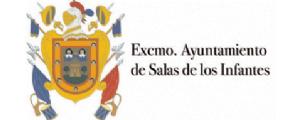Informe sobre el yacimiento Tenadas de los Vallejos II
The outcrop is between the towns of La Revilla and Ahedo de la Sierra
Part of a Sauropod dinosaur more than 13 mts long was found during the first year of excavations. This specimen has important scientific value, since it had previously only been found in Africa and South America. The occurrences support the idea that the three continents were joined during the Early Cretaceous. Moreover, the La Revilla Rebbaquisaurid is several millions years older than its African and South American relatives, making it the oldest known representative of this particular dinosaur family.The excavations of that first year were carried out under the leadership of Mr. Fidel Torcida, director of the Dinosaur Museum in Salas, and Mr. Xavier Pereda, palaeontologist from the University of the Basque Country and the Museum of Natural Sciences, Paris. The excavation team was formed by the members of the Palaeontologist Association of Salas (C.A.S.) and students from the Geology and Biology Departments of the Universities of Salamanca, Zaragoza, Basque Country and Leon.
One of the most spectacular pieces obtained from “Tenadas de los Vallejos II” is a complete left femur of more than one meter long, attributed to a Rebbaquisaurid. It is now exhibited in the palaeontology room of the Museum of Dinosaurs in Salas de los Infantes.
Next to the femur, both ischia (hip bones) of the same specimen were obtained. These bones give important information that permits the classification of the dinosaur.
Other pieces of the same specimen that will provide information in describing the animal are: several cervical, dorsal and caudal vertebras found at the outcrop.
One of the surprises of this excavation was the fact that the Rebbaquisaurid wasn´t alone…., bones belonging to another type of dinosaur were found along with the Rebbaquisaurid.
The main pieces of the new discovery were two cervical vertebras that have been attributed to a Spinosaurus due to its peculiar appearance. The Spinosaurus was a carnivorous dinosaur of more than 12 mts long, greater in size than the archifamous Tyrannosaurus Rex, which loses the title of the King of carnivorous dinosaurs.
Spinosaurus, as Rebbaquisaurids, was common in the north of Africa. So the new discovery supports the hypothesis of the land connexion between Europe and Africa during the Early Cretaceous, 120 to 130 mya.
The Tenada de los Vallejos II publication is internationally important for the Early Cretaceous palaeogeography. The dinosaurs found in this outcrop offer key data to the dinosaur fauna of both continents.













